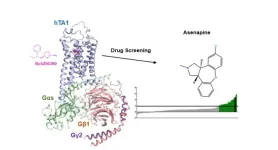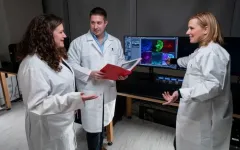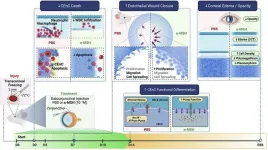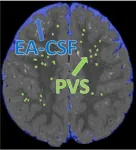Their findings, detailed in the January 2 online issue of Nature Communications https://doi.org/10.1038/s41467-023-44601-4, show that a brain protein known as the TAAR1 receptor, a drug target known to regulate dopamine signaling in key reward pathways in the brain, differs significantly in humans compared to the preclinical rodent models on which drugs are typically tested.
The study suggests considering species-specific differences in drug-receptor interactions and further investigation into ways asenapine affects the body, as steps toward potential therapeutic improvements.
"In investigating the functional and structural properties of TAAR1, our study aimed to shed more light on its mechanisms and pharmacology,” says study first author Gregory Zilberg, a PhD candidate at Icahn Mount Sinai. “Our findings may guide the development of novel TAAR1 drugs and prompt more exploration of medications similar to asenapine.”
Using advanced techniques to investigate TAAR1’s structure and function, the researchers identified three important elements. First, there are differences between rodent and human TAAR1 that likely affect how preclinical model studies can be translated to humans. Second, TAAR1 is much more closely related to serotonin and dopamine receptors than previously assumed. This suggests that several serotonin-targeting medications might have unknown therapeutic efficacy or side effects that are in fact due to their actions at TAAR1.
Finally, the investigators highlight that the clinically used antipsychotic asenapine unexpectedly shows strong activation of TAAR1, suggesting in fact that this serotonin- and dopamine-targeting antipsychotic could derive some of its therapeutic effects from TAAR1 activation. If proven in further studies, this could open up new possibilities for its potential in other TAAR1-related therapeutic applications such as its use in substance use disorders, as well as the development of new asenapine-based drugs.
The researchers noted the absence of information about differences in how TAAR1 works in rodents and humans, and emphasized that some of these differences could account for why preclinical data on TAAR1 has not yet been successfully translated into effective therapies in humans. Next, the researchers plan to study where TAAR1 is located within cells and what its precise role is in influencing serotonin and dopamine signaling.
“This study provides a significant leap in understanding TAAR1, offering potential avenues for drug development and encouraging further research into its therapeutic applications,” says senior author Daniel Wacker, PhD, Assistant Professor of Pharmacological Sciences, and Neuroscience, at Icahn Mount Sinai. "As our work advances, we anticipate it may play a crucial role in shaping the development of new drugs targeting TAAR1 and offering valuable insights into how drugs similar to asenapine might work."
Other authors who co-authored this work, all with Icahn Mount Sinai, are Alexandra K. Parpounas, M.S., Audrey L. Warren (PhD candidate), and Shifan Yang, PhD.
The paper is titled “Molecular basis of human trace amine-associated receptor 1 activation.” See https://doi.org/10.1038/s41467-023-44601-4 to view details on funding.
-####-
About the Icahn School of Medicine at Mount Sinai
The Icahn School of Medicine at Mount Sinai is internationally renowned for its outstanding research, educational, and clinical care programs. It is the sole academic partner for the eight- member hospitals* of the Mount Sinai Health System, one of the largest academic health systems in the United States, providing care to a large and diverse patient population.
Ranked 14th nationwide in National Institutes of Health (NIH) funding and among the 99th percentile in research dollars per investigator according to the Association of American Medical Colleges, Icahn Mount Sinai has a talented, productive, and successful faculty. More than 3,000 full-time scientists, educators, and clinicians work within and across 44 academic departments and 36 multidisciplinary institutes, a structure that facilitates tremendous collaboration and synergy. Our emphasis on translational research and therapeutics is evident in such diverse areas as genomics/big data, virology, neuroscience, cardiology, geriatrics, as well as gastrointestinal and liver diseases.
Icahn Mount Sinai offers highly competitive MD, PhD, and Master’s degree programs, with current enrollment of approximately 1,300 students. It has the largest graduate medical education program in the country, with more than 2,000 clinical residents and fellows training throughout the Health System. In addition, more than 550 postdoctoral research fellows are in training within the Health System.
A culture of innovation and discovery permeates every Icahn Mount Sinai program. Mount Sinai’s technology transfer office, one of the largest in the country, partners with faculty and trainees to pursue optimal commercialization of intellectual property to ensure that Mount Sinai discoveries and innovations translate into healthcare products and services that benefit the public.
Icahn Mount Sinai’s commitment to breakthrough science and clinical care is enhanced by academic affiliations that supplement and complement the School’s programs.
Through the Mount Sinai Innovation Partners (MSIP), the Health System facilitates the real-world application and commercialization of medical breakthroughs made at Mount Sinai. Additionally, MSIP develops research partnerships with industry leaders such as Merck & Co., AstraZeneca, Novo Nordisk, and others.
The Icahn School of Medicine at Mount Sinai is located in New York City on the border between the Upper East Side and East Harlem, and classroom teaching takes place on a campus facing Central Park. Icahn Mount Sinai’s location offers many opportunities to interact with and care for diverse communities. Learning extends well beyond the borders of our physical campus, to the eight hospitals of the Mount Sinai Health System, our academic affiliates, and globally.
-------------------------------------------------------
* Mount Sinai Health System member hospitals: The Mount Sinai Hospital; Mount Sinai Beth Israel; Mount Sinai Brooklyn; Mount Sinai Morningside; Mount Sinai Queens; Mount Sinai South Nassau; Mount Sinai West; and New York Eye and Ear Infirmary of Mount Sinai.
END





